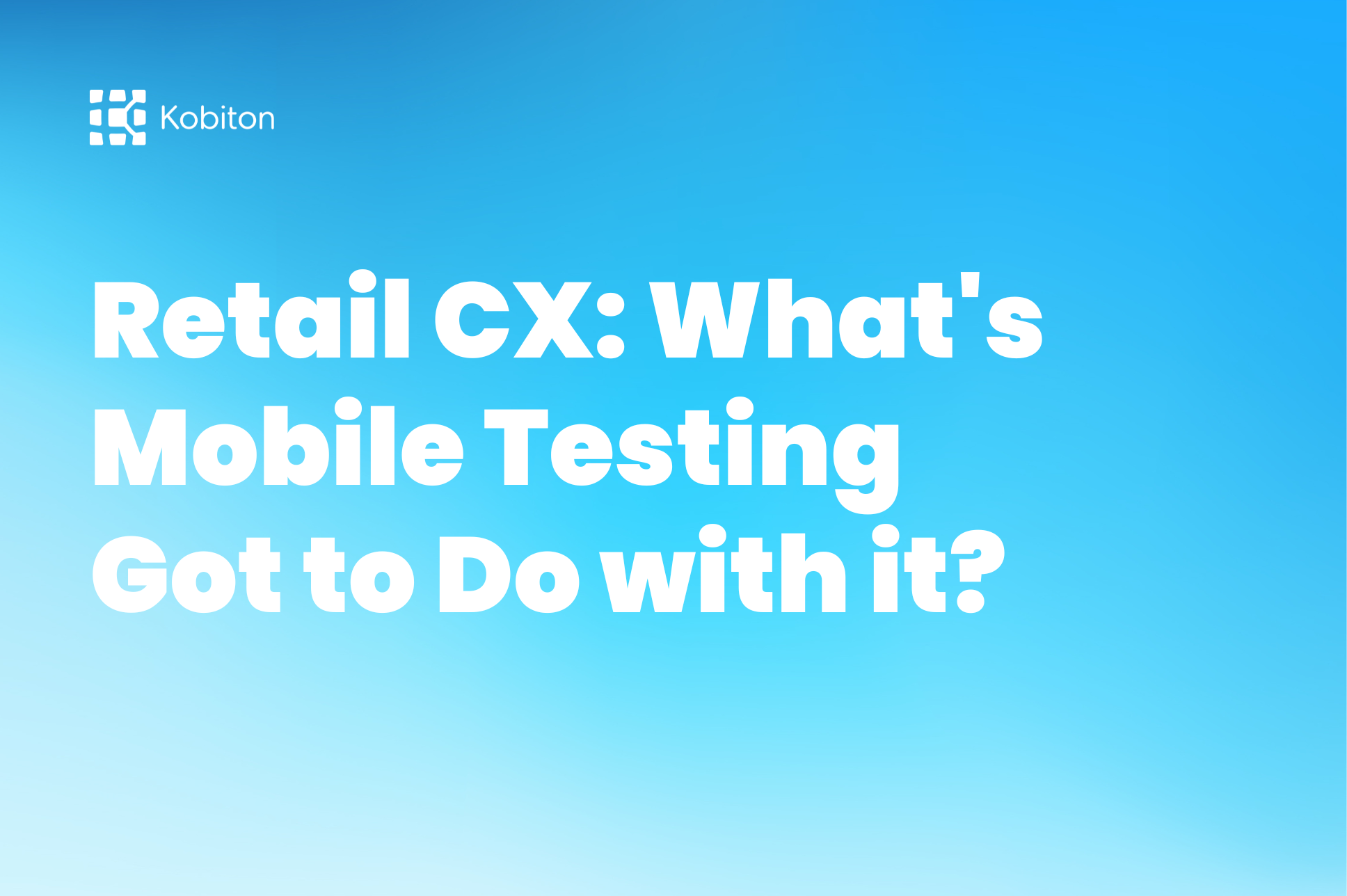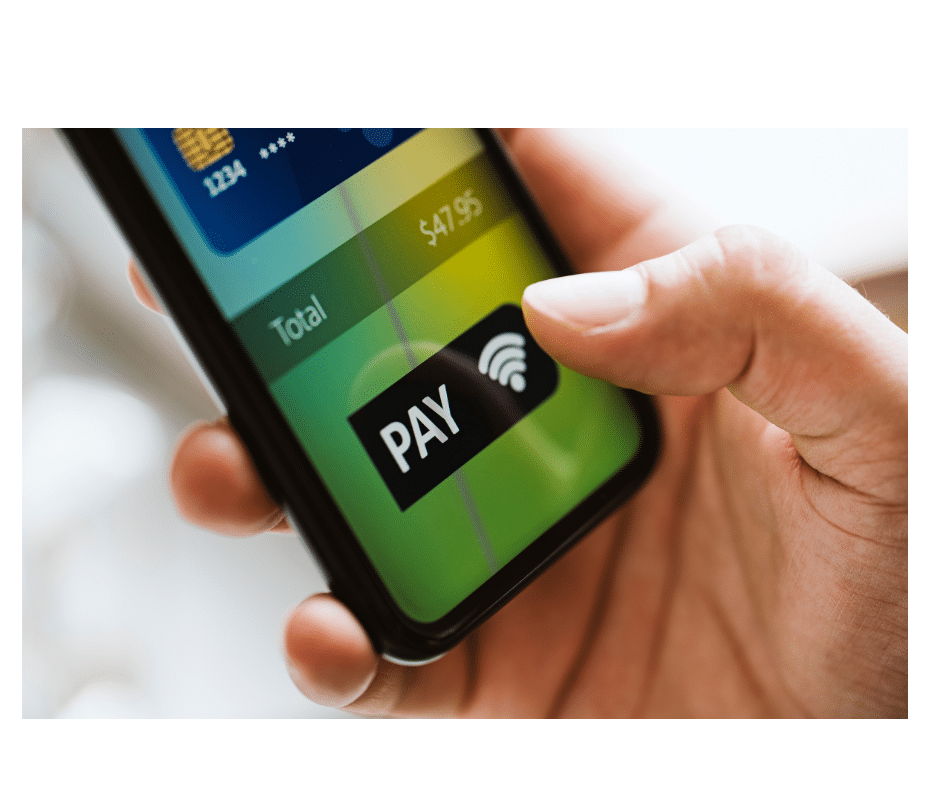
Retail CX: What’s Mobile Testing Got to Do with it?

Adam Creamer
Have you ever been frustrated while shopping on a mobile app because a product page won’t load? What about having to input missing or incorrect items in your food delivery app and you can’t select the item? These are both instances of retail mobile apps not being the best they can be. But just like with software development in general, testing plays a pivotal role in creating and maintaining an app that users will love and return to.
Speed. Functionality. Performance. These are the baseline parameters by which you need to judge your app’s performance. After all, users will likely uninstall an app that is too slow, takes up too much space, or doesn’t work as expected. It exists in an ecosystem (the user’s device) and must react accordingly.
However, despite the focus on the end user during retail mobile app testing, the number one goal of mobile app testing for retail apps is to increase visibility and engagement. Let’s review how retail mobile app testing helps companies achieve that goal.
Mobile apps for retail cover many kinds of products, user intent, and sales goals. From enabling your company to use push notifications about expiring loyalty points or special offers to helping you reinforce your brand with a logo every time users look at their device screen. Retail mobile apps also leverage autofill, one-tap purchases, and auto-ship reminders to drive conversions and sales. However, every mobile application from Chick-fil-A to Ulta to Instagram would have undergone several key types of testing to maintain their desired levels of operability and performance.
Functional testing for retail mobile apps tests anything from logging into an account to making a purchase. Functional testing scrutinizes every part of the application to detect and rectify any deviations from the desired behavior of the application to ensure a polished final product. A specific input should return the expected results for functionality to be working as intended. These can be automated to better ensure enhanced functionality without additional effort from your team.
Performance testing evaluates the non-functional aspects of the software system, such as performance, usability, reliability, scalability, and security. This ensures that your application is delivering a flawless experience as intended and often includes app speed which is key to retaining users.
Like functional testing, usability testing puts the software in the hands of real users to observe their behavior. This type of test typically asks users to complete tasks either in-person or remotely for a company to then review the diagnostic data and ensure that the software is easy to use and understand, to help identify any friction points in the user journey.
This might be an overlooked aspect of mobile app testing, but it deserves more attention. Safety and security are growing concerns for more and more technology users. As such, security testing checks a software’s authentication, authorization, and encryption mechanisms to ensure that it is secure and protected against unauthorized access or data breaches.

When considering the most important factors of retail mobile app experiences, several things come to mind like speed, UI design, and security. But those are not all that you should be testing in your mobile app SDLC.
Development teams must consider six factors that most impact sales and conversions from retail mobile apps when creating testing suites and employing automated test solutions.
The forecasted number of mobile devices in use by 2025 is nearly 18.2 billion. That means tons of different types of devices (not just Google Pixel, Samsung Galaxy, and iPhone). Additionally, this means different kinds of operating systems, different versions of those operating systems, and different settings and configurations that all require compatibility with your mobile app. Testing is a surefire strategy to enhance that compatibility.
No one likes a slow mobile app experience, and it can lead to users abandoning your retail mobile app in addition to lost sales and conversions. Testing speed and responsiveness require testing under different network conditions including 3G, 4G, 5G, and Wi-Fi. This allows your team to assess loading times, response times, and overall responsiveness. Armed with this data, your team can make whatever changes are needed to ensure a smooth user experience.
A graphical user interface (GUI) dictates what kind of experience your user (UX) is going to have. If it is well-designed and intuitive, the user will not even think twice about navigating the app or the app’s visuals. However, if there is stuttering, missing elements, non-working elements, or other issues with your GUI, the UX suffers and can lead to app abandonment. Testing helps provide a consistent and smooth experience for your users that keeps them coming back.
The basics of this kind of testing involve verifying that user data is securely encrypted during transmission and storage. However, operating mobile apps means abiding by rules not just of one state or country. It can mean having to adjust to the rules of various countries around the globe. To achieve compliance with relevant regulations such as GDPR, CCPA, and PCI-DSS, your team will need to conduct robust security testing.
Losing a customer at the point of payment shouldn’t happen and can be better avoided with testing for payment processing. Though device fragmentation can prove a challenge in this area, your team can test the integration with payment gateways to ensure smooth and secure transactions. Data that verifies that payment processing functions properly and that sensitive information is handled securely can benefit your team in terms of cost, effort, efficiency, and friction.
This is a particular focus of Kobiton’s solutions as integration becomes more and more vital in the digital landscape. Testing for retail mobile app integration with other systems can ensure a smoother process overall. This includes systems like CRMs, inventory management, and loyalty programs. Furthermore, your team can test interoperability with backend systems to ensure data consistency and real-time updates.
Retail mobile app testing strategies don’t differ too much from testing strategies for non-mobile systems. They still require both automated and manual testing, robust documentation, and a few other approaches to deliver the best diagnostic data for your team to work with. The biggest difference lies in device fragmentation.
Let’s explore six strategies that help secure seamless functionality and user satisfaction.
“Shift Left” in software design is an approach where teams want to find, fix, and prevent bugs or defects early in the SDLC. This means incorporating testing at all stages of the SDLC and relying on both manual and automated testing to identify and address issues sooner. Conducting iterative testing throughout the development process minimizes treading old ground, allowing teams to focus on bigger projects, updates, and more.
Emulations and simulations are just that; they cannot provide substantive real-world data for development teams. Testing on real devices can ensure a more accurate representation of realistic user experiences across different hardware configurations. Prioritizing testing on real devices can mitigate the negative impact on user experience.
Manual testing, in today’s technological zeitgeist, is not the most efficient way to test software. While it remains an important aspect of any SDLC, many teams have turned toward automated testing to find more bugs faster, cut costs, reduce deployment timelines, and make things easier for developers, engineers, and QA testers. Automated testing tools like Kobiton test native and hybrid apps on a wide range of physical mobile and tablet devices. This allows for parallel test execution and debugging.
New hardware releases, updates to operating systems, or even installing a new app on a mobile device can cause problems for your retail mobile app. Continuous testing after app release ensures compatibility with new OS versions and SDKs. It also allows your team to address user comments – an important step in maintaining and supporting your user base.
A consistent language alongside consistent documentation allows teams to be better informed when making changes and updates to source code or addressing bugs and problems. Instead of wasting time trying to determine what something means, teams can rely on that shared language and knowledge. Maintaining testing documentation throughout the entire development process helps achieve this goal. This includes test plans, test cases, test results, and bug reports.
Device fragmentation relates to the variations among platforms, devices, browsers, and network providers, in addition to other variables that can pop up among an app’s user base. The problem description is simple, and the solution is almost as simple: test across many different combinations. While it is practically impossible to maintain universal interoperability, robust testing can help your team provide compatibility to the most users possible.
Kobiton offers a comprehensive platform for testing retail mobile apps, providing developers and testers with the tools and capabilities needed to ensure the quality, reliability, and performance of their apps. This is a great opportunity to showcase the features or capabilities offered by the Testing Product by Kobiton.
Continuous integration and continuous delivery (CI/CD) pipeline leverages automation to improve the quality of software, enhance security, and create a more streamlined SDLC for development teams. Kobiton’s platform helps reduce regression cycle time, enabling enterprises to deliver mobile applications faster and more efficiently.
Kobiton simplifies the transition to a CI/CD pipeline thanks to solid tests that mirror real-world applications and use real devices. The simple interface makes onboarding easier and our focus on integration means less friction with adoption.
The “shift left” approach is all about enhancing productivity while cutting costs and wasted effort. The key lies in automated testing and actionable data. Kobiton provides both manual and automated testing options, allowing teams to choose the best approach for their needs. This helps maximize productivity while minimizing costs.
Secure and Scalable Device Lab is not always at the heart of an automated solution’s methodology. However, Kobiton’s device lab management empowers QA teams to build their mobile lab tailored to their needs, providing instant access to all the devices required for manual or automated testing at scale.
Buildkite, a hybrid SaaS platform for enterprise scale, is another Kobiton solution for more mature teams, as well. It can run thousands of agents concurrently, testing more than 3,000 devices hosted on-premise for privacy and security.
Leveraging automated test scripts for retail mobile app testing can further enhance efficiency while providing better insights. Utilizing machine learning further enhances these results with Kobiton’s AI engine delivers 3X faster script execution, Appium script generation, self-healing execution, and no-code testing. This allows teams to achieve more automation in a fraction of the time.
Let’s review the key takeaways from above:
No matter the size of your app’s user base, thorough testing should be a priority to ensure a positive user experience. You can leverage mobile apps for increased visibility, sales, brand recognition, engagement, and more. But you don’t get those amazing results without putting in a bit of forethought and using the right tools for the job.
Learn more about mastering mobile retail and download our eBook!
